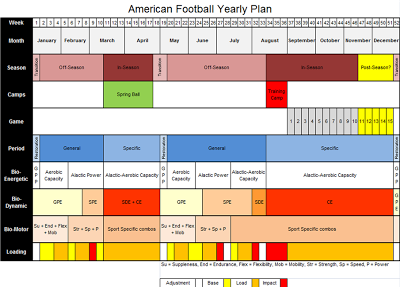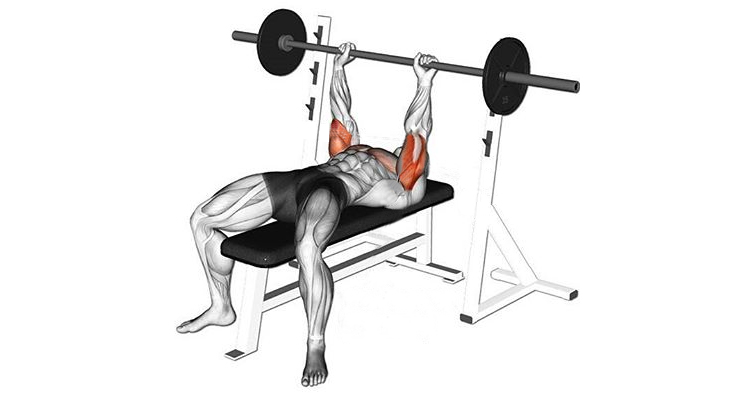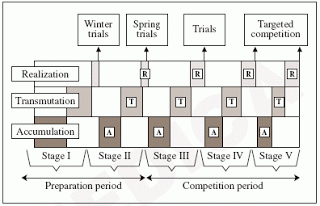Concurrent Strategies in Strength Training – Part 1
Concurrent training by definition means training for achieving multiple training goals at the same time. Concurrent training in iron game was made popular by Westside Barbell Club and Louie Simmons, who erroneously called it ’conjugate’ (which is a term coined by Yuri Verkhoshanski, a method utilizing delayed training effect and training residuals and other fancy adaptation terms) instead of concurrent. Synonyms with concurrent are parallel and mixed training.
Why is concurrent training so hot topic lately? Because, in theory, when you utilize sequential training (or traditional, or linear training) you constantly move away from qualities you have just developed, and by the rule ’use it or lose it’ you start de-training in those qualities (if there
is no maintenance work aimed at maintaining those qualities).
Please note that Block training (or conjugate training, or conjugate sequence system) developed by Yuri Verkhoshanski is a special form of sequential training organized into blocks, where each block is aimed at provoking strong delayed training effect by utilizing concentrated
loading (which induces overreaching). The blocks are ’conjugated’ into specific sequence, so does training residuals and delayed training effects are maximally used at the most important time of the year (read: competition period, meets, matches, etc, etc).
Concurrent training, contrary, try to develop all important qualities at the same time. This approach, as any other, have its own pros and cons. The most major advantage of the concurrent approach is the parallel (hence the synonym with concurrent) development of all qualities. But the most major disadvantage is the fact that after some time (or with the most advanced athletes) you simply cannot develop all the important qualities at the same time, without risking over-training and limiting potential training effects.
This is where a modification of concurrent training comes into play. The modification is simple and it is based on training emphasis. You still train all the qualities, but you emphasize only few of them while maintaining others, then you switch. In my old articles I confused this modification of concurrent training (emphasis methods) with conjugate sequence system and Block training. My bad! Although it is very similar to Block training it is NOT Block training, nor it is conjugate nor conjugate sequence system. It is modified concurrent training.
This little rant of mine was aimed at ’solving’ (or confusing you even more) this concurrent vs. conjugate problem. The topic of this article is concurrent strategies in strength training and this is the topic I will hold on for now on, with a little talk about possible use of emphasis method at the end of this article. Stay with me, because fun is just about to start.
Basically, there are numerous goals that can be achieved with strength training. Depending on the author, there may be different number and names of them. For the sole purpose of this article, I will define those goals, mostly relying on Westside terminology:
1. Maximal and Relative Strength
- The goal is the development of maximal strength
- The method used for developing this motor quality is Maximal Effort, or ME
2. Explosive Strength
- The goal is the development of explosive strength, or the ability to produce great force in least amount of time
- The method used for developing this motor quality is Dynamic Effort, or DE
3. Muscular Hypertrophy
- The goal is the development of muscular hypertrophy, without going into the debate of sarcoplasmatic vs. myofibrilar hypertrophy
- The method used for developing this motor quality is Submaximal Effort, or SE (mostly for functional or myofibrilar hypertrophy) and Repetition Effort, or RE (mostly for total or sarcoplasmatic hypertrophy).
4. Muscular Endurance
- The goal is the development of muscular endurance, fat loss, anatomic adaptation and sarcoplasmatic hypertrophy (depending on the context). Some also put ’vascularization’, ’glycogen depletion’, ’mitochondria development’ as the goal of this method
- The method used for developing this motor quality is Repetition Effort, or RE
As you may see, even in this classification there are ’conflicting areas’ regarding the goals and methods used. I am very familiar with the fact that this classification can be criticized, broaden, reduced etc., but anyway, it is useful for the purpose of this article, which is description of how to use different concurrent schemes to develop all those goals at the same time (and time is very relative term, just ask Einstein).
It can be said that reaching of the mentioned four goals (and thus motor qualities) is based on utilizing different loading protocols (weight, reps, sets, tempo, rest, etc.) or methods. So, each of the mentioned four methods (ME, SE, DE, RE) utilize different loading protocols. This is based on the repetition continuum, or the ’idea’ that different goals can be achieved utilizing different reps per set. There is a dynamic interaction between the variables of reps, sets and loads. The load used (% of 1RM) ultimately determines how many reps per set are done. Reps per set (or set time) ultimately determines how many total sets must be done. The interaction between the three will affect what adaptation is seen. Although not all authorities agree, there is thought to be a continuum of adaptations which may occur with different repetition sets. This continuum is called repetition continuum.
According to Christian Thibaudeau (one of the coaches that have great influence on my philosophy), this repetition continuum changes as the athlete advances. Here is the modified table from ’The Black Book of Training Secrets – Enhanced Edition’.
| Beginner | Intermediate | Advanced | |
|---|---|---|---|
| Strength [ME] | 5-9 reps/set | 3-7 reps/set | 1-5 reps/set |
| Functional Hypertrophy [SE] | 10-12 reps/set | 8-10 reps/set | 6-8 reps/set |
| Total Hypertrophy [RE] | 13-16 reps/set | 11-14 reps/set | 9-12 reps/set |
| Strength Endurance [RE] | 17-24+ reps/set | 15-22+ reps/set | 13-20+ reps/set |
Another repetition continuum is presented by another bright guy, Lyle McDonald. Here is modified classification of loading protocols (motor qualities) from ’Periodization for bodybuilders’ article (which can be downloaded from Lyle’s website).
| Type of training | Reps (%1RM) | Rest | Tempo | TUT (time under tension) |
|---|---|---|---|---|
| Strength training [ME] | 1-5 (85%+) | 3-5 min | 3/0/X | 20 sec or less |
| Intensive bodybuilding [SE] | 4-6 (80-85%) | 2-3 min | 3-4/0/1 | 20-30 sec |
| Extensive bodybuilding [RE] | 6-8 (75-80%) 10-15 (70-75%) |
1-2 min 1-2 min |
3/0/2 3/0/2 |
30-40 sec 40-60 sec |
| Really Extensive bodybuilding [RE] | N/A (60-65%) | 1 min | 2/0/2 | 60-120 sec |
And to finish this copy-paste part of this article, here is the ’repetition continuum’ from James Smith, author of ’High/Low Sequences of Programming and Organizing Training’.
- ME → (+90%) 1-3RM depending on strength preparedness
- SE → (80-90%) 4-7RM depending on strength preparedness, 4-10 repetition range
- RE → (<80%) +8RM, >8 repetitions
- DE → (up to 80% for Olympic lifts/derivatives) (up to 70% for classic Powerlifts/derivatives)
As I pointed earlier, each author utilize slightly different classification, but look for the ’common denominator’ — every one of them classified the goal they want to reach (motor quality), method they used to reach it and loading protocol that determines that method (based on repetition continuum).
But guess what? Different people respond differently to rep ranges. Some may ’grow’ by doing triples and doubles (3 and 2 reps per set with 2 and 3RM load), and some may grow doing 15s. Anyway, you won’t grow if you don’t eat. Same stuff for strength – some may increase their strength by doing maxes and some may increase it pretty good by doing 6s. As coach Thibaudeau pointed, those responses depend on athletes level, but I would love to add: it depends on athletes characteristics (muscle fiber dominance) and nutritional status (caloric sufficit, maintenance or deficit level, amount of protein and carb, etc, etc). You may grow doing 5×5 and you may not, depending how much you eat, what other training you are doing, how are you sleeping, etc.
What is the point of this? The point is that I am NOT negating the existence of repetition continuum, but rather I am trying to point out that it must be put into context (other training, athletes characteristic, nutritional status, recovery, etc). With the concurrent approach to strength training you are doing all mentioned methods (maybe not all of them, depending on your philosophy) and you are trying to develop all qualities at the same time. It is possible to develop muscular hypertrophy and strength, but it is near impossible (except for fat beginners and those coming from long lay off) to develop strength and fat loss and even more impossible to develop fat loss and muscle mass increase (without clenbuterol and AAS, anyway).
This is why I said the things must be put into context and they must be goal oriented for a given athlete. These ’problems’ are universal to other methods too (sequential, alternating) not solely to concurrent. Concurrent method solves some drawbacks of sequential method (’use it or lose it’ law), along with utilizing ’cross-over’ effect between methods.
What I mean by this ’cross-over’ effect is that doing ME training will increase number of reps or weight used during RE and SE training, and RE and SE training will provoke different
stimuli to muscles and CNS (variety) along with increasing muscle mass which will in turn improve ME performance. Same thing with ME and DE method. Yet again, this may become negative ’cross-over’ if recovery capacities of the athlete are exceeded, and RE/SE work may impair ME/DE performance and vice versa (as visible with advanced lifters). This is why smart planning with 4 concurrent approach is a must, and after some time (with most advanced athletes) modified concurrent method must be used (emphasis switch and maintenance loads). More on this later.
If you are still reading this and you are not confused or sleepy, and since I described everything I needed to describe, I can start talking about different strategies toward implementing concurrent approach in real life strength training. Based on my current knowledge I can identify three groups of such strategies, namely:
- Rep Schemes
- Daily Undulating Periodization (DUP)
- Priority Lifts
Rep Schemes
The most simple method of utilizing concurrent approach to training would simply be to do whole ’rep continuum’ on a given exercise. In the following picture, there is an example of ’straight sets’ (or sets across) which are most commonly used in strength training.











Responses